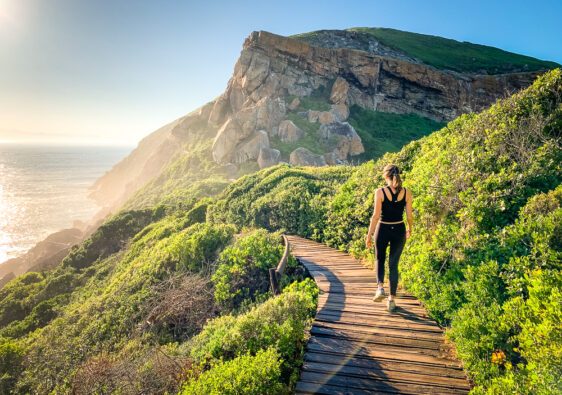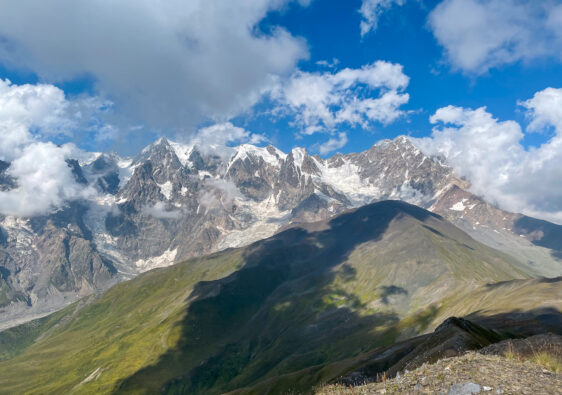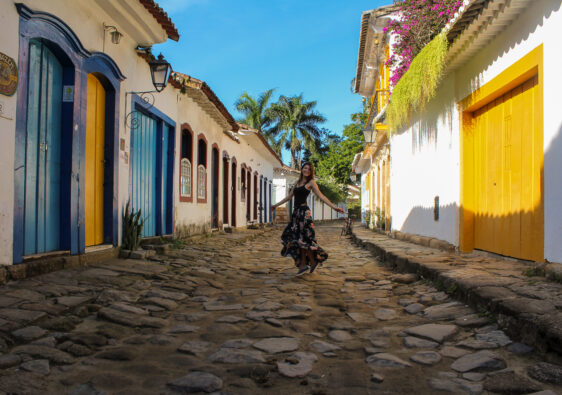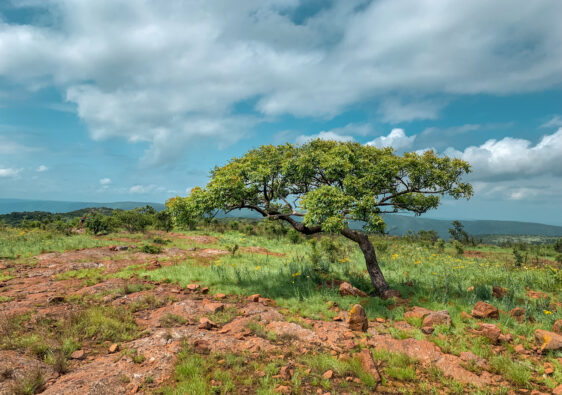East Africa isn’t usually on most people’s list for a go-to-holiday destination. But it should be. It’s gorgeous and far less crowded with tourists than many other places.
For outdoor lovers, two things should be on your list – hiking the Congo Nile Trail along Rwanda’s Lake Kivu and relaxing at Lake Bunyonyi in Uganda. Lake Kivu is a lake surrounded by volcanoes, while Lake Bunyonyi has 29 hilly islands scattered throughout.
At the end of this post, I have suggested an alternative itinerary to what we did. There was a lot we learnt from our trip that I wouldn’t suggest anyone repeats. For our experience, read on…
The Congo Nile Trail
Rwanda is famous for gorillas, but the absolute highlight for us was the Congo Nile Trail. That was the primary reason we wanted to visit. The trail runs along Lake Kivu to the west of Rwanda. The DRC is visible on the other side of the lake.
The main attraction of the trail is that it meaders through villages and banana trees and coffee plantations. It’s also one of the safest multi-day trails you can hike on your own in the region with very little preparation. (It’s just super humid, so prepare for that.)
The trail starts in Kibuye and ends in Gisenyi. You can read about it in my dedicated blog post on the hike.
I would strongly recommend not spending two nights in Rubona and Gisenyi. It’s a starting point for the Congo Nile Trail and tours up the active volcano, Mount Nyiragongo in the Congo. There’s not much else. The town was grungy, single story, and had sidewalks with open sewerage systems. It was not nice at all compared to other parts of the country. Honestly, we probably could have headed out that day – there wasn’t much point in sticking around.
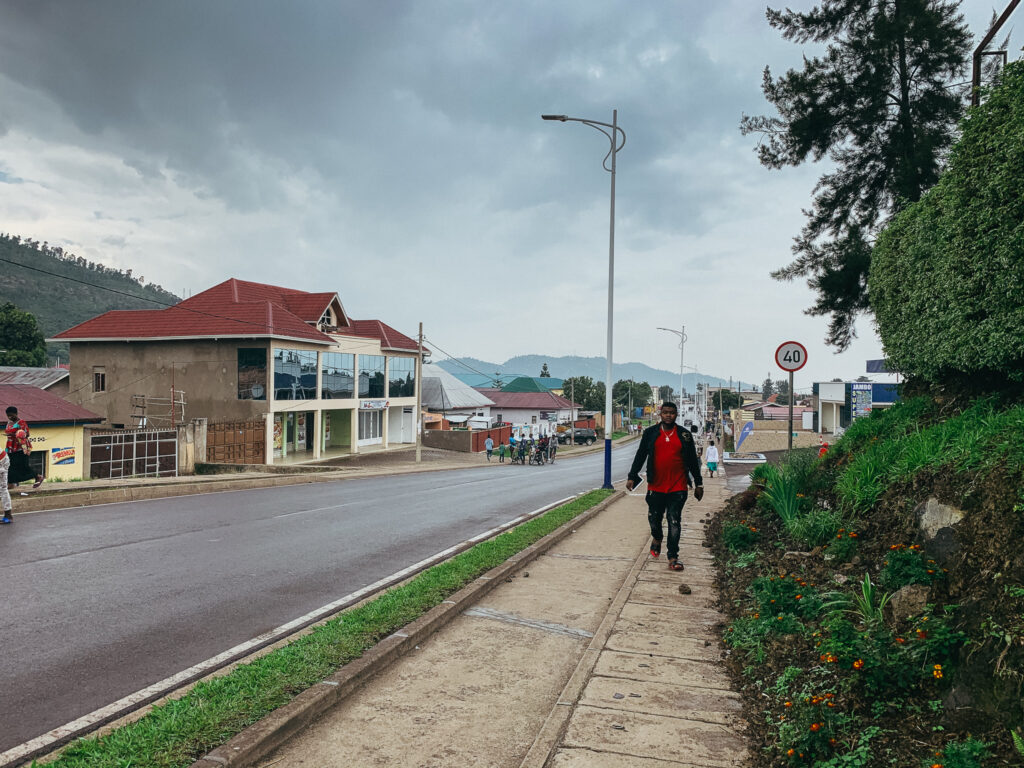
We only spent two nights here because we arrived battered from the Congo Nile Trail and the next day was Christmas. I thought that public transport wouldn’t operate on a holiday and I was afraid everything would be booked out, so we planned for two nights in Gisenyi. As it turns out, public transport is very much active on holidays, though at a higher price.
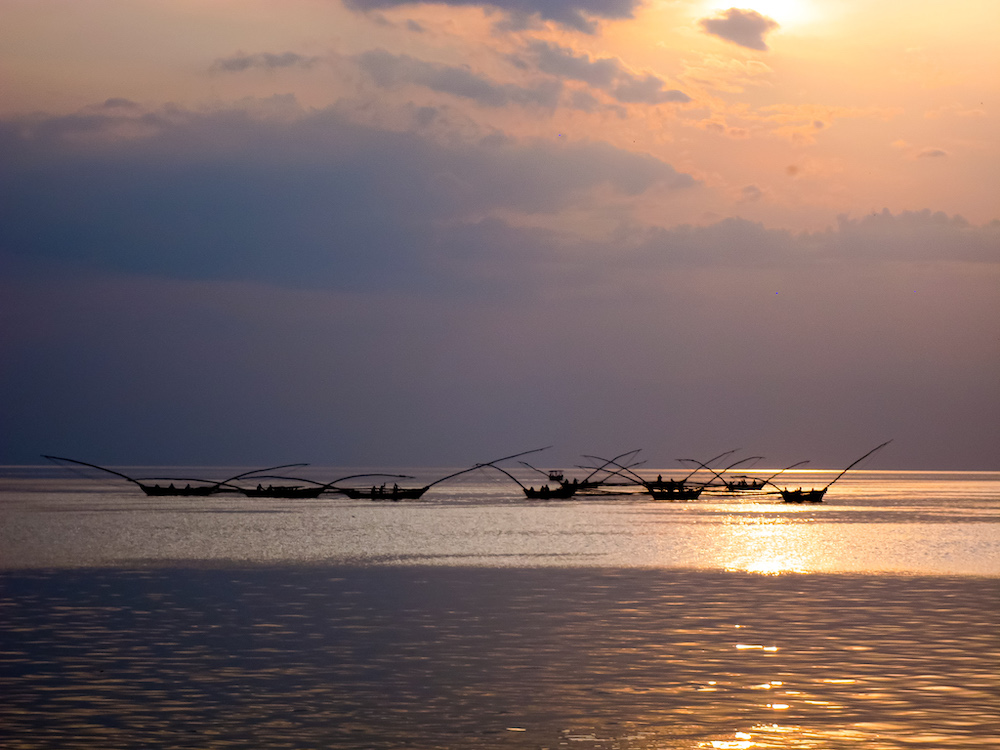
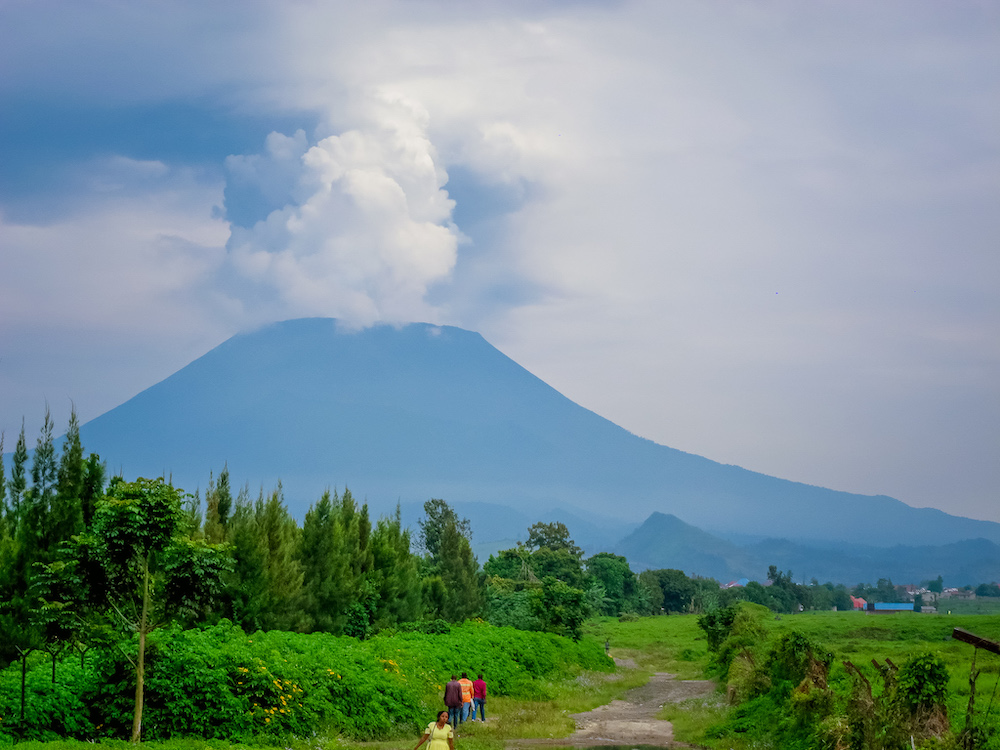
The Border Crossing: From Gisenyi to Lake Bunyonyi:
We woke up very early this day to head over to Uganda. Our goal was to get to Lake Bunyonyi. After packing up, we got mototaxis into Gisenyi (800RWF) where we hopped on a bus that would take us to Ruhengeri/Musanze/Kidaho (all the same place) (1300RWF). The bus sat around for an hour – they always tell you the wrong departure time that you want to hear. Then we finally got going at a snail’s pace and made it to Musanze about 1.5-2hr later (it really wasn’t that far away). There we hopped off near a gas station on the road that ran straight towards the Cyanika border. We hailed two mototaxis. Or rather 50 mototaxis found us, and for +/- 500RWF took us the last 20km to the border. They were so much faster than taking the bus and very cheap. At the border we hopped off and walked over.
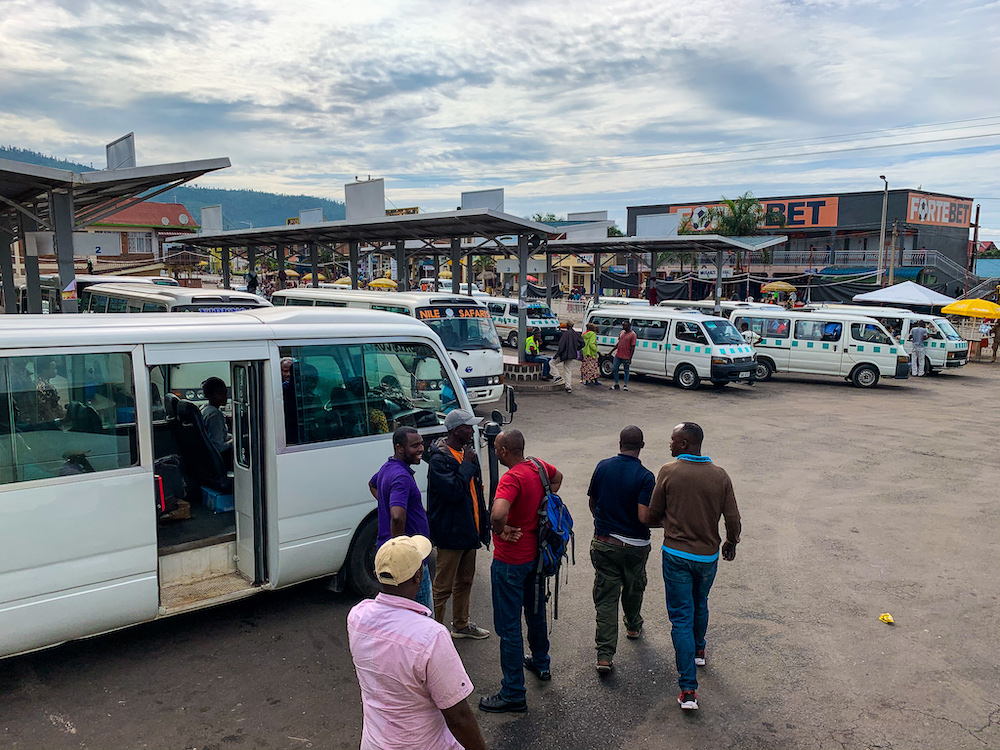
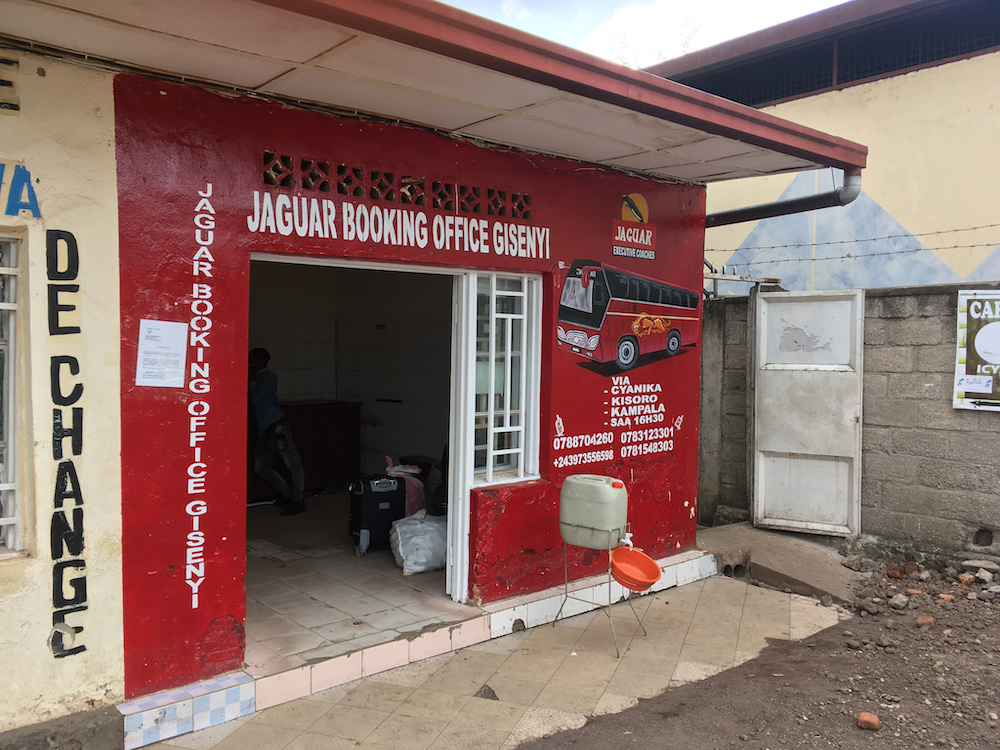
Honestly, the Cyanika border didn’t look like much of a border. It was also ridiculously confusing to cross – you had to go to a police check, then stamp out, then through UN Ebola check (just a temperature reading), and then you were on the Uganda side. There you needed to go to a police clearance thing, then a visa check, then get your visa recorded then out to another police check… People just kept pointing the next step to us and we just kinda wandered about and it worked out.
To get to Kisoro, a bunch of taxi drivers wanted to take us but for the foreigner special of $20. Literally, for that price you can walk. We exchanged some money from the customs officer (Rwandan francs for Ugandan shillings and lost a bunch in the exchange process). Then I headed over to the boda boda drivers (the Ugandan equivalent of a motorcycle taxi) to negotiate for the correct price into town (5000UGX). Funnily, at this, a taxi driver had a change of heart said he’d drive us there for the correct price, so we went with him. He stopped by his house to drop off food with his daughter before dropping us off in town.
Kisoro was such a horrible dusty town. Initially, we thought we might spend the night here, but changed our minds. Though we had lost an hour to the time zone change at the border and it was now getting later in the day, we decided to move onwards. We asked around at a cafe to find the next way onward to Kabale.
There is a big bus station at Kisoro, where you can take Horizon, Bismarken or Jaguar to Kabale. But the busses there weren’t running to Lake Bunyonyi and those that did were only expected to come by late at night. There was a Post Bus leaving at 3pm from the post office, but it cost 14000UGX each. So, we needed to find a share taxi.
After getting more cash from the bank, we found a share taxi for 10000UGX each– basically someone with a 5-seater car and got in and waited for it to fill up. I’ve read reports from people who said it took 2hrs to fill the car. Luckily, it took less than an hour to fill up, but there was a lot of unnecessary shuffling around of people. Chris and I crammed into the boot with another small girl and there were four people in front of us and two next to the driver. It started raining and was really foggy so we didn’t see much on the drive, which went rather quickly. It was probably beautiful – I caught glimpses of heavily forested mountains.
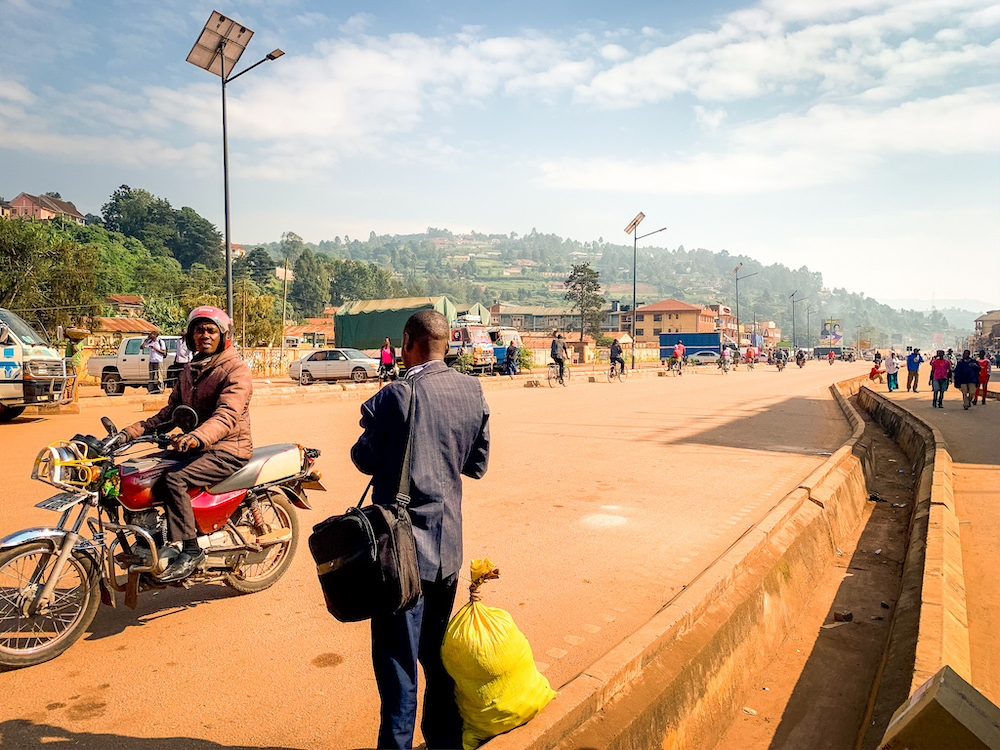
We got to Kabale in about 2hrs at about 5pm and got off at a random point to start looking for a Ugandan SIM card. Geesh, that was hard to find. Eventually we found a place still open and selling them (shops closed at 5pm). Unfortunately, we couldn’t buy a SIM card because the office that verifies documents already closed. So the shopkeeper kindly lent us his.
With that sorted, we were ready to head to the lake for the next three days. We found two boda bodas (haggled hard for 6000UGX each) and were off to Lake Bunyonyi. The road to Lake Bunyonyi is quite bad – it’s a dirt road full of deep grooves. The road also goes up and down massive hills, so it takes a lot of core and leg strength to hang on. The other thing is, unlike in Rwanda, there weren’t any helmets here. My boda boda broke down on the way, so the driver needed to repair the belt.
Lake Bunyonyi
We decided to aim to stay at Crater Bay Cottages the first night – we had not pre-booked, but that was fine. We were able to haggle the price down in person. We had their famous avocado crayfish dish for dinner with roti. It was delicious, though the pink mayo sauce took some getting used to. In general, that area was quite nice and there were a lot of backpackers hanging about. Though there was a noisy hotel across the water (Overland Resort) that took away from the serenity.
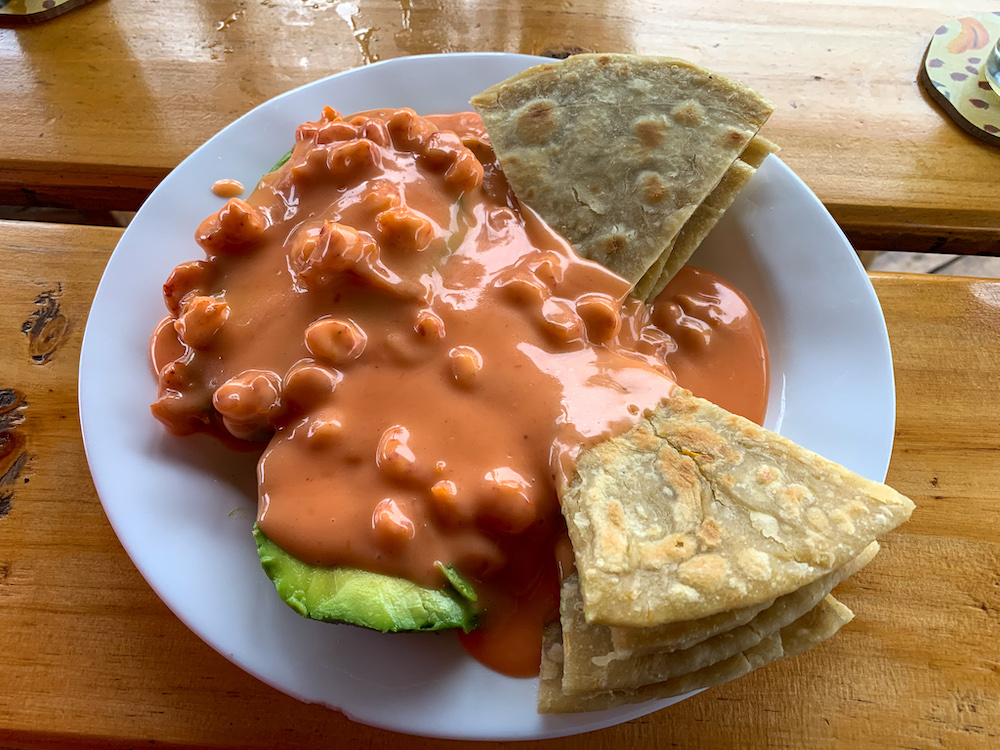
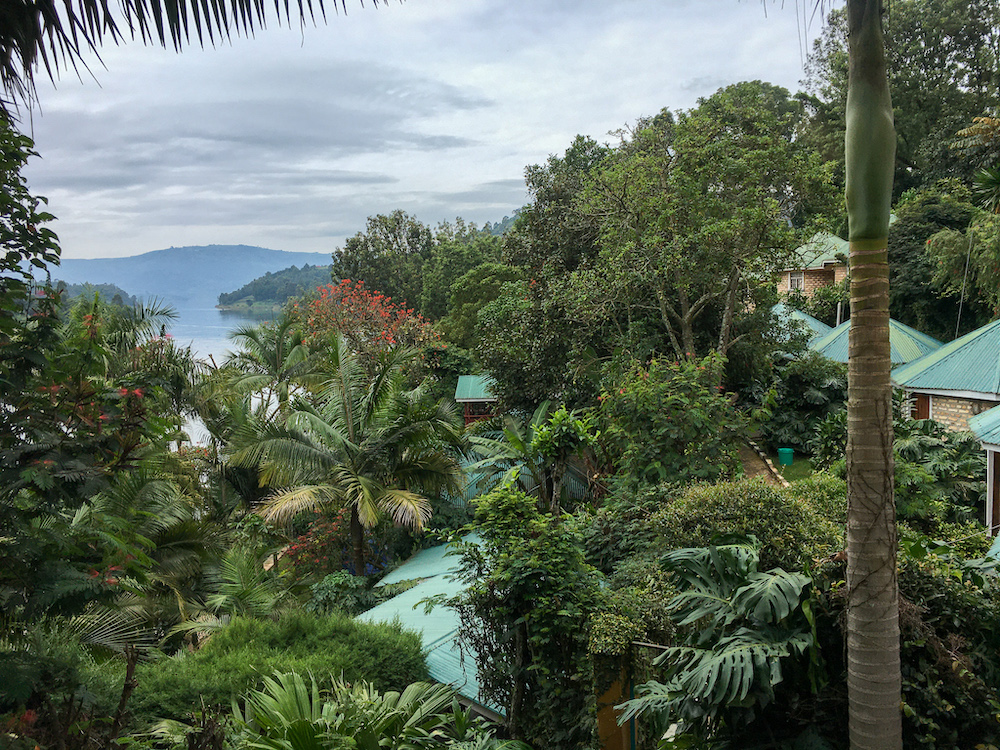
Day 1: Lake Bunyonyi
After some rolex – an omelette wrapped in a roti – we headed down to the lake to meet our ride to our island home for the next few days. We took a boat (incoming transfers included in the accommodation price) to Paradise Ecohub. We went straight to our cool open-door thatched hut. It had a king-sized bed and a porch, drop toilet outside that you had to put sawdust in after you used it and a view of the lake. The only problem with an open-door room is it is a bit scary sleeping at night, if you aren’t used to weird animal noises. And the thatch seemed to be some kind of breeding ground for massive spiders.
We went for a short walk on the island. Though the island is quite small at about 2km long, the altitude makes walking difficult. There are a few community projects on the island and goats and chickens. Exhausted, we opted to rent a dugout canoe that afternoon to take out onto the lake. It was really difficult to steer and paddle. It was a little irritating when the locals breezed by effortlessly in their canoes and laughed at our predicament. We only spent an hour or two on the lake paddling past birds and islands, before we were exhausted. For dinner that evening we had more avocado crayfish.
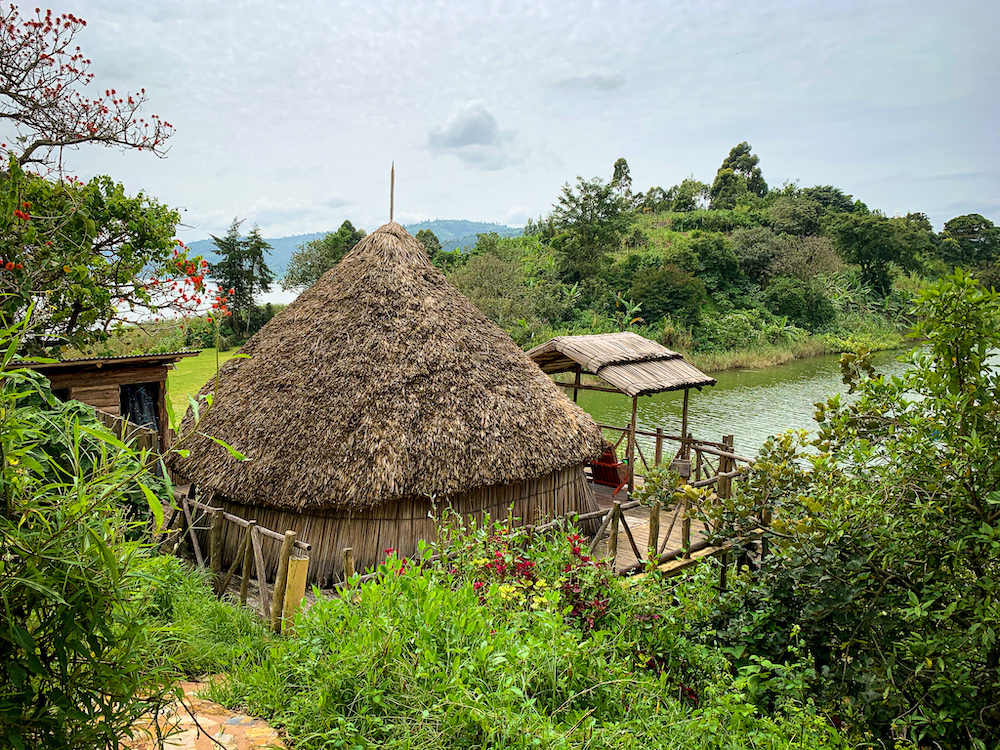
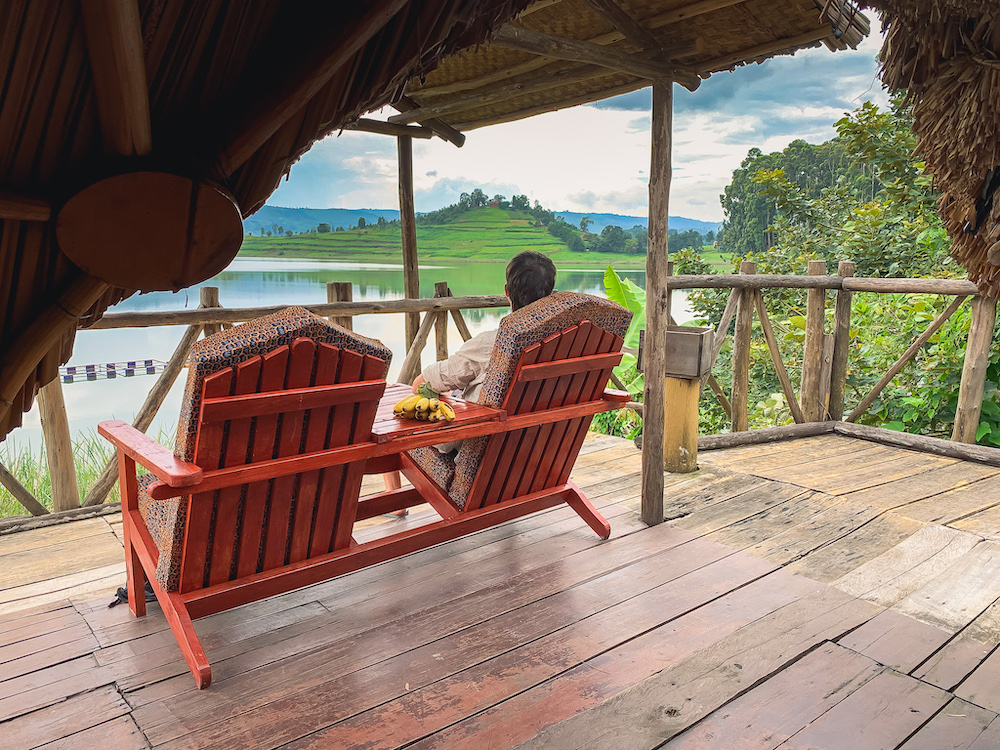
Day 2: Lake Bunyonyi
On this day, the guys at the hotel dropped us off with the boat on the mainland just a few metres from the island where we started a hike to the famous hilltop viewpoint. We didn’t pass many people on the way – a few young kids were playing in the road. We took a path up a hill past a village where a mother must have told her kids that mzungus (white people) were there to get them out of her hair. Her strategy worked – they followed us. We continued steeply up the mountain before joining a road that brought us to the Arcadia Lodges. From up here you can pop by the restaurant and get an amazing view of many of the islands on Lake Bunyonyi.
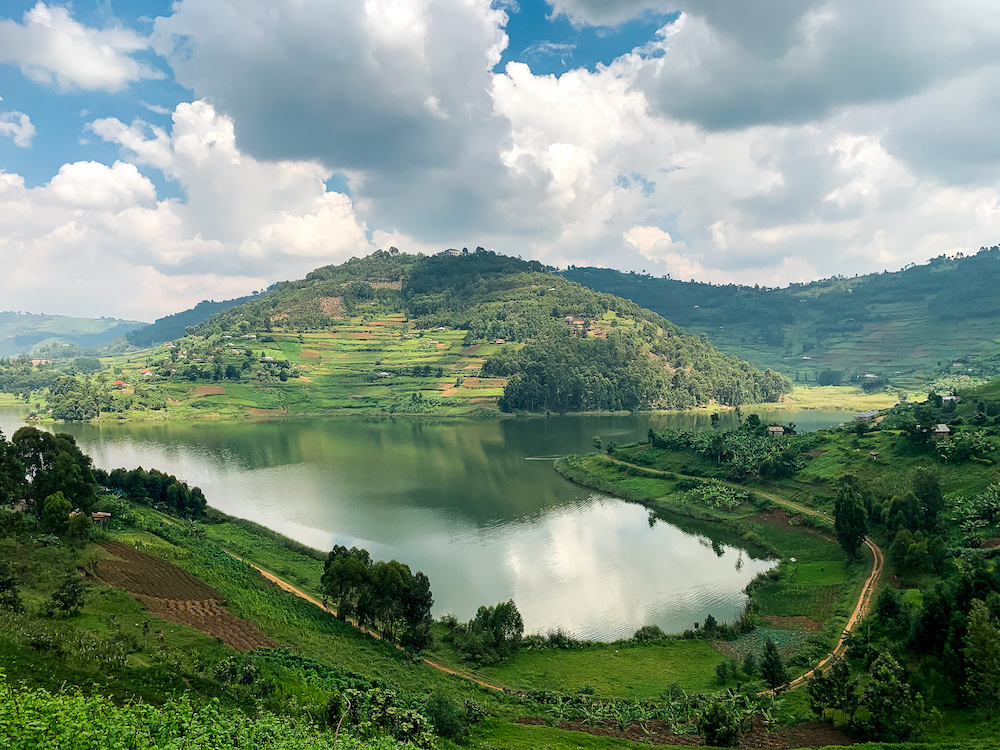
Our visit was cut short when thick storm clouds rolled in. We headed down the hill, through a woodland path, and walked back along the lake which was much nicer than our original route – it had stunning views of the islands. We passed a few very drunk villagers. One drunk lady was following us shouting things. We passed the same young kids again – they were so cute, they were worried we would get caught in the rain and wanted us to come back home with them. The rain really let go by this point, so we broke into a sprint to get back to the canoe and over to the accommodation.
For food on the island, you really only have two options: Paradise Ecohub and Byoona Amagara. We decided to change things up and walk over to Byoona Amagara for food that day. The accommodation there is quite nice, but it was definitely busier. There were a lot of backpackers about and quite a few tourists arriving. There’s a library of sorts that seemed like a great way to spend several weeks relaxing and reading. The place is owned by an American, so it caters to that backpackers-in-Africa vibe.
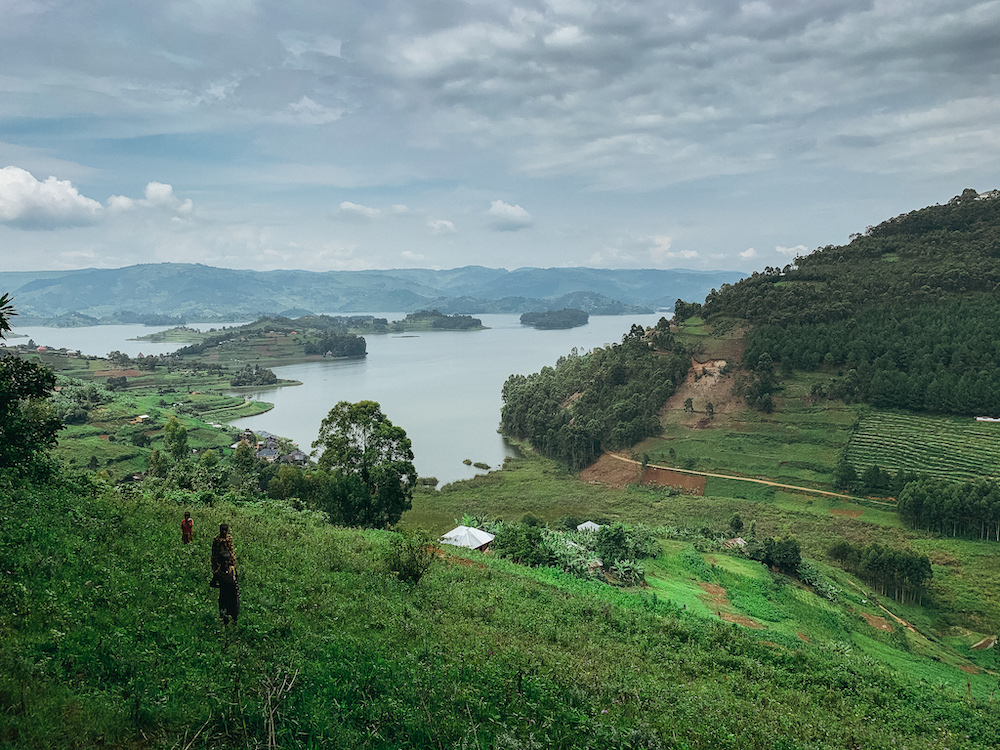

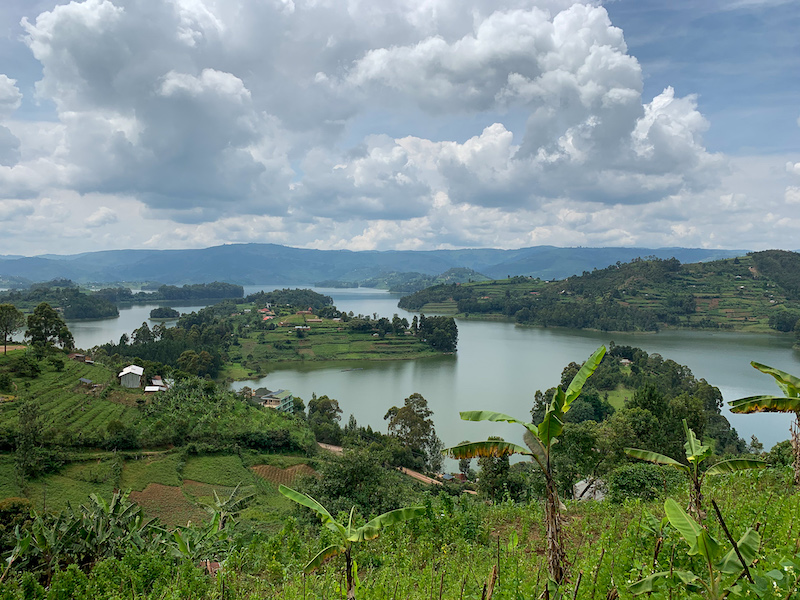
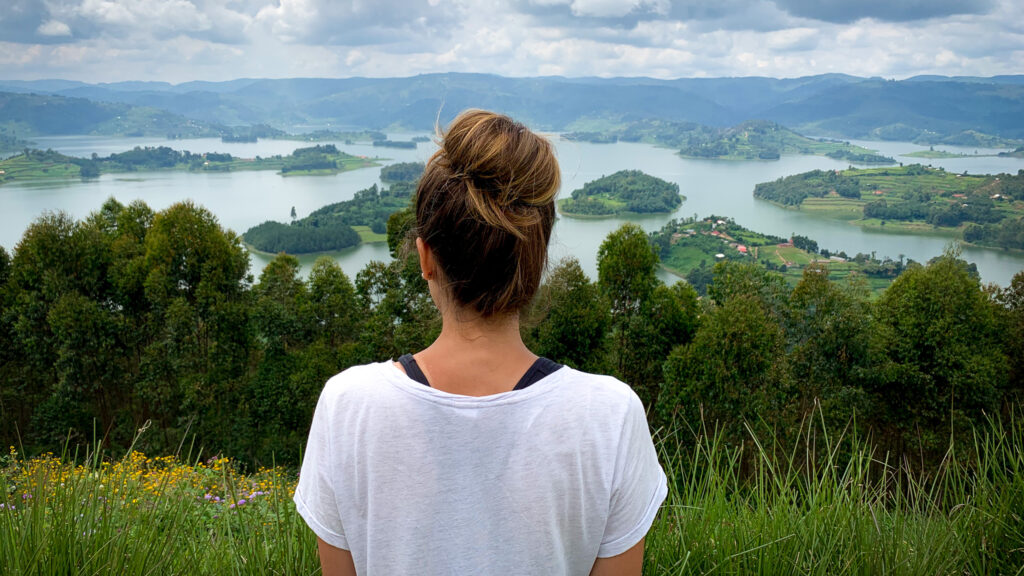
Day 3: Lake Bunyonyi
By this point, we were running out of new things to do. We did an early morning walk up a nearby hill on the mainland to see the view of the islands. A local kid followed us the whole time and wanted payment in the end for ‘guiding’ us. This happens a lot – you can either entertain it or say no.
Otherwise, the day was a bit of a calm before the storm. We planned to find our way to Kampala the next day and hadn’t quite figured out if and when there was a bus heading there. We did some hand-wash laundry, before heading down to the lake. It wasn’t exactly warm swimming weather, but we wanted to at least say we had swum in Lake Bunyonyi. When the sun was out, it was hot, but this had been quite intermittent. Perhaps if we had visited in the drier, hotter months of January and February we would have had more swimming opportunities.
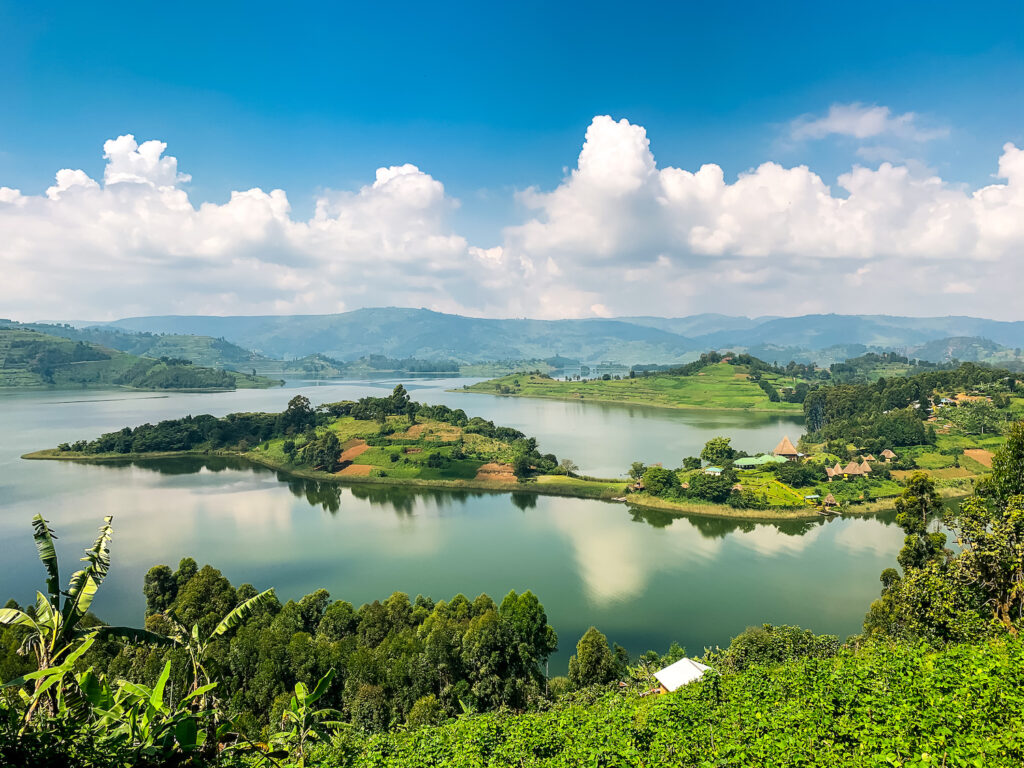
Travelling from Lake Bunyonyi to Kampala
While we had the option to return to Cape Town via Kigali, we decided to detour to Kampala first. We wanted to break up the trip initially and stop somewhere along the way, but I only realised there was nothing to see along the route after we booked our tickets out of Kampala instead of Kigali. Had I known the journey that awaited us, I would have taken the shorter bus back to Rwanda. But I didn’t. And so, early in the morning, Chris and I took a motorboat back to the mainland. The market area didn’t have much activity, so we only managed to hail one boda boda, which we both shared. Luckily, it managed to carry the weight of three people and 2 big bags back to Kabale.
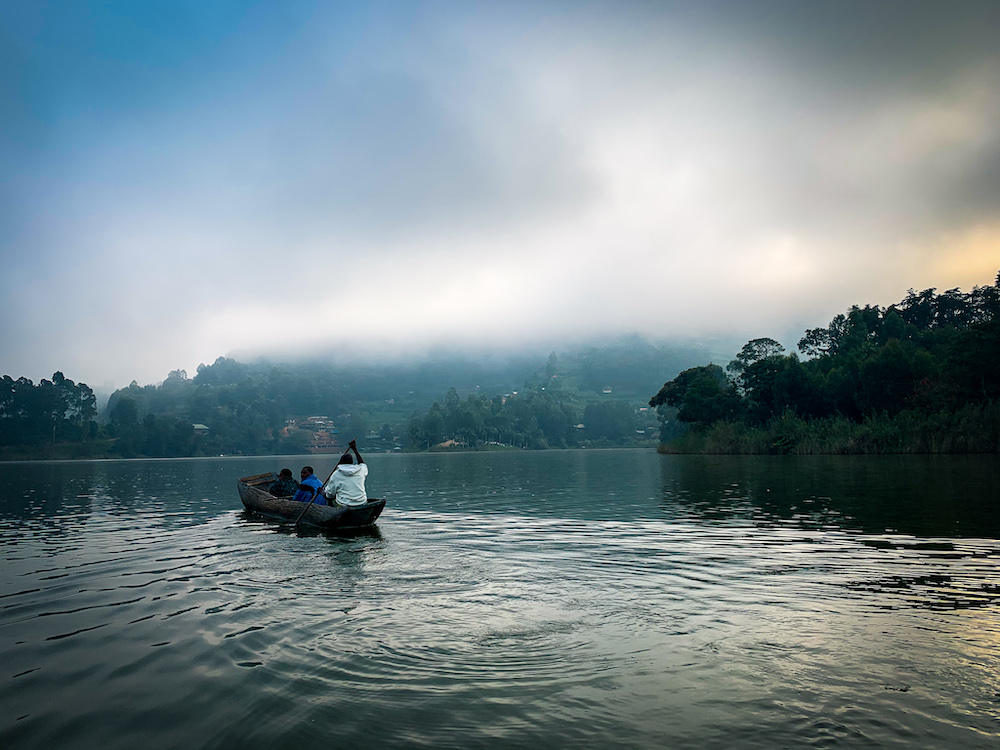
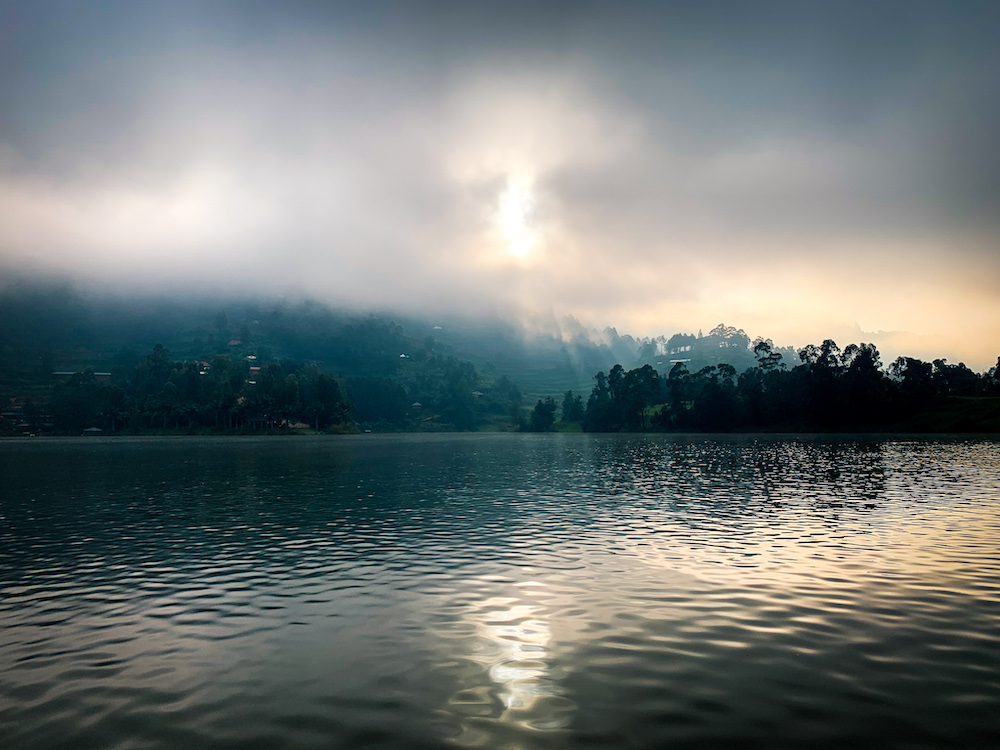
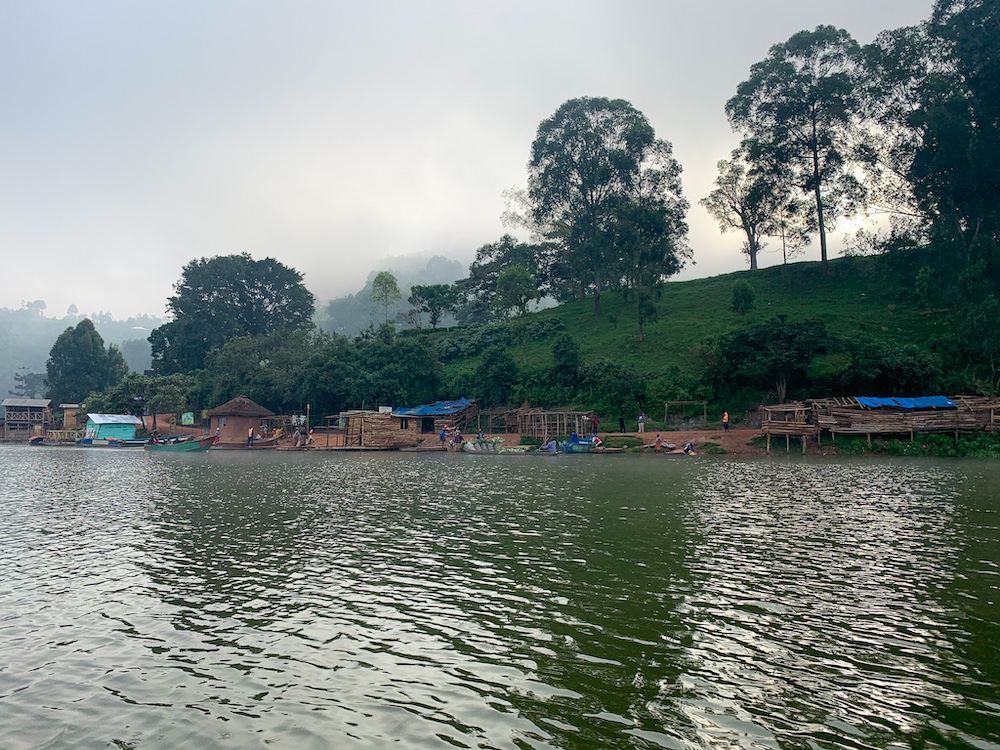
In Kabale, we returned and swapped the SIM card at the cellphone shop. The guy was shocked we actually came back. And then we went to the Jaguar ticket office to get our bus tickets to Kampala. We found out the bus time and company from the manager at Paradise Ecohub – it’s such a mission to find bus info out. I had previously tried tweeting and Facebook messaging the various companies. A Ugandan friend had recommended we take Modern Coast or Trinity, and by all means avoid Jaguar. Unfortunately, the Modern Coast and Trinity buses weren’t running at a convenient time, so we learned the hard way why you should avoid Jaguar.
You haven’t learnt the meaning of inefficiency and incompetency until you’ve travelled with a Jaguar bus. We took the 10am bus from Kabale to Kampala. First, it arrived an hour late. Then, when I boarded, I saw that no seats were free. And yet the ticket office had issued us our reserved tickets for seats. Once onboard, it took another 30 minutes to leave Kabale as the drivers were fighting with the ticket office people saying that tickets should have been 50000UGX (we paid 40000UGX). Why they couldn’t communicate ticket prices as a company blows my mind. The bus drivers were debating demanding extra cash from everyone (an absolute scam if you ask me considering there were no seats and we had to sit on the floor of the bus.)
If you think the inefficiency and incompetency ends there, just wait. They told us it would take 7hrs to reach Kampala. The roads are perfectly fine – no potholes and a speed limit of 80kph. We spent forever crawling from town to town, stopping for so many irrational reasons along the way – police checks, the driver wanted bananas, a random guy wants to get out to give his friend something, and so on. Every time we stopped to load more passengers (on an already overbooked bus) the drivers would get in arguments outside with passengers, further delaying what’s really not an exacting or long trip.
About half-way through the bus journey, this guy, a so-called doctor and now salesman professionally, comes on the bus and gives a very loud sales talk for two hours on various ‘medicines.’ Cough drops, some sort of magical tooth cleaner, Chinese viagra, aloe vera shampoo (with magical properties of course), deworming juice, you name it… complete bullocks.
We only had one bathroom stop – at 1pm. We got into Kampala at 8pm. That’s 7 hours without a bathroom or water. On a hot smelly bus.
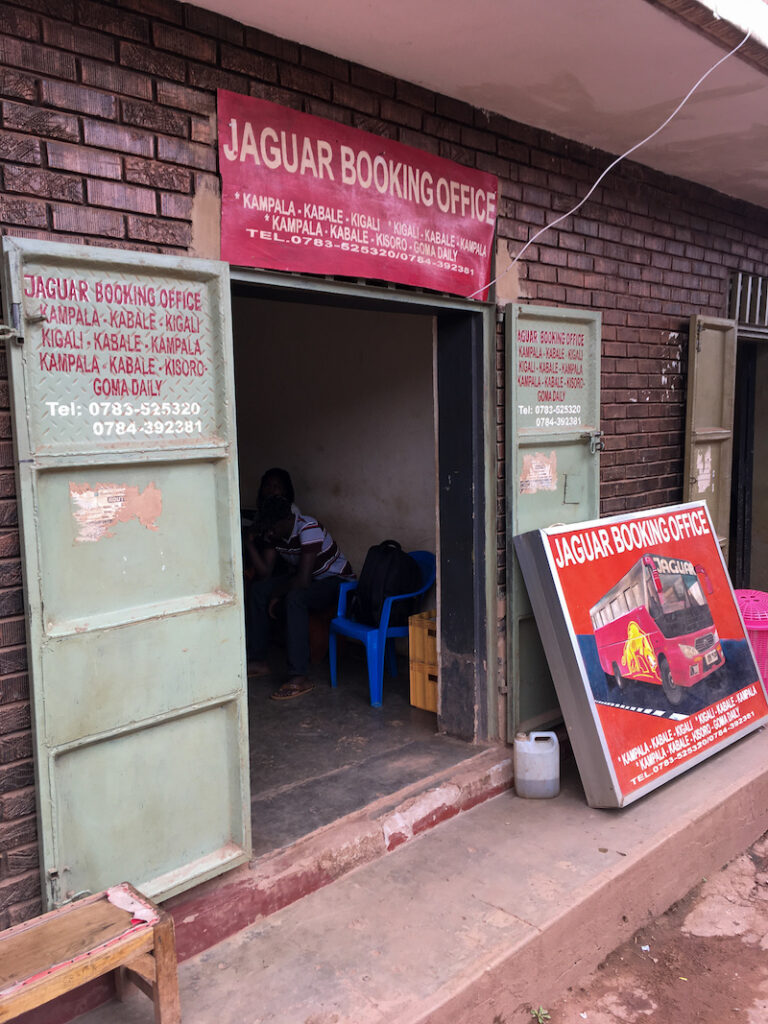
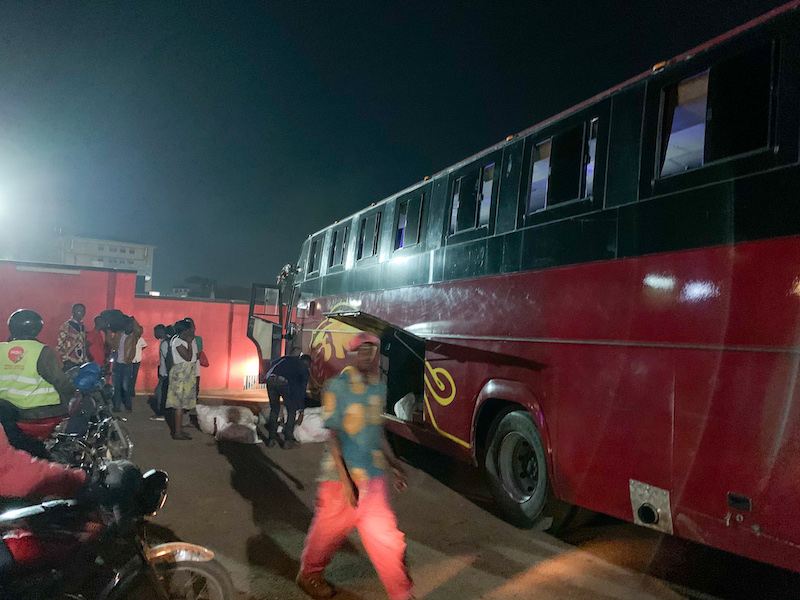
When we finally arrived, we tried to call an Uber to bring us to the hotel. I’m not sure if Uber recently just launched in Kampala, but we had a lot of trouble with getting drivers to show up or use the app properly. The Uber driver we called ended up driving off in the opposite direction of our pick-up location and then refused to cancel the trip. On another Uber we did manage to get into, the driver first picked up cash and then got gas while the meter was running. Either they don’t know how to use the app, or they know how to use the system very well.
Finally, after a long time of waiting for an Uber that never came and haggling prices down with boda bodas, we got going to the hotel. Chris and I squeezed onto a single boda boda with our two massive bags (no helmets). The ride was absolutely terrifying. The city was so dark – it doesn’t have all the lights that New York or Cape Town have. Traffic rules were non-existent, and yet there was so.much.traffic. I just closed my eyes and hoped I’d live to see the other side of the intersection. We agreed we wouldn’t use a boda boda in Uganda again.
We originally were going to find a hostel when we arrived in Kampala. A few friends recommended the Red Chili Hideaway at the edge of the city. But we got into the city late and I was defeated from a week of some of the most horrendous sleeping conditions that I had ever had the displeasure of experiencing, so my dad booked us a room at the Protea Marriott hotel. Honestly, it was such luxury to be able to shower and sleep in a room without bugs or animals.
Home Stretch: Kampala/Entebbe
Since we only had to check out by 4pm, we didn’t rush. Since the main tourist attractions were either closed or too difficult to get to, we ventured out to go see the main minibus taxi station. Walking through Kampala was a mess – the sidewalks were poor as were street crossings. The deeper we got into the city, the more hectic it got with the street layout. We found the bus station and went into a building to the top to get a better view. It was there, looking down at hundreds of minibus taxis, that we decided to Uber to Entebbe (our final stop) rather than try to find a taxi.
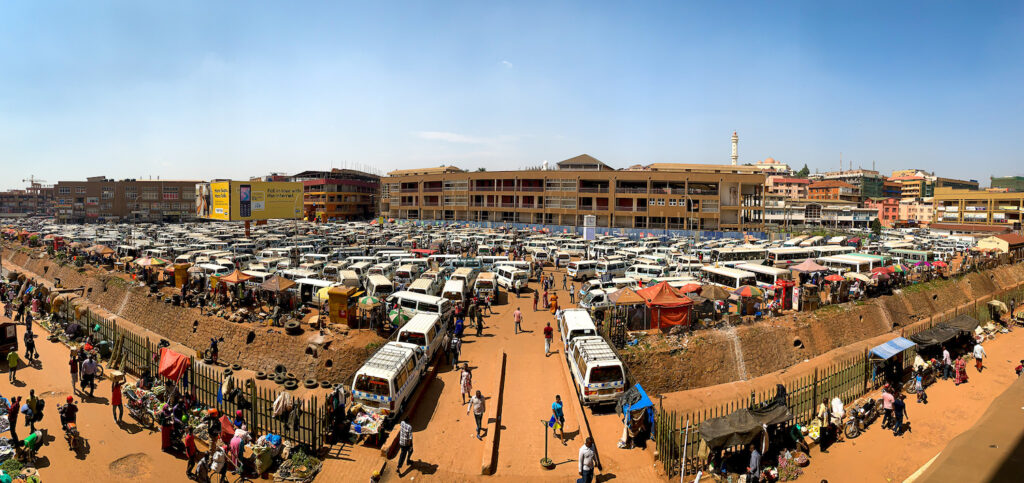
We headed back to the hotel, stopping at an expat-heavy mall along the way where we looked at groceries and got coffee beans. A lot of malls around East Africa have hefty security and X-ray checks when you enter the premises, so don’t be alarmed. From there, we walked to Prunes – another café and local expat watering hole where we bought more coffee beans to bring back home. (Neither of us enjoyed Ugandan coffee, we discovered. If you like a dark roast and bitter taste, you’ll have a more positive experience.) On our way back to the hotel, we passed a refugee camp. Overall, I would recommend against walking around Kampala – the sidewalks are cluttered and you’re going to have to play chicken with hundreds of boda bodas every time you cross the street.
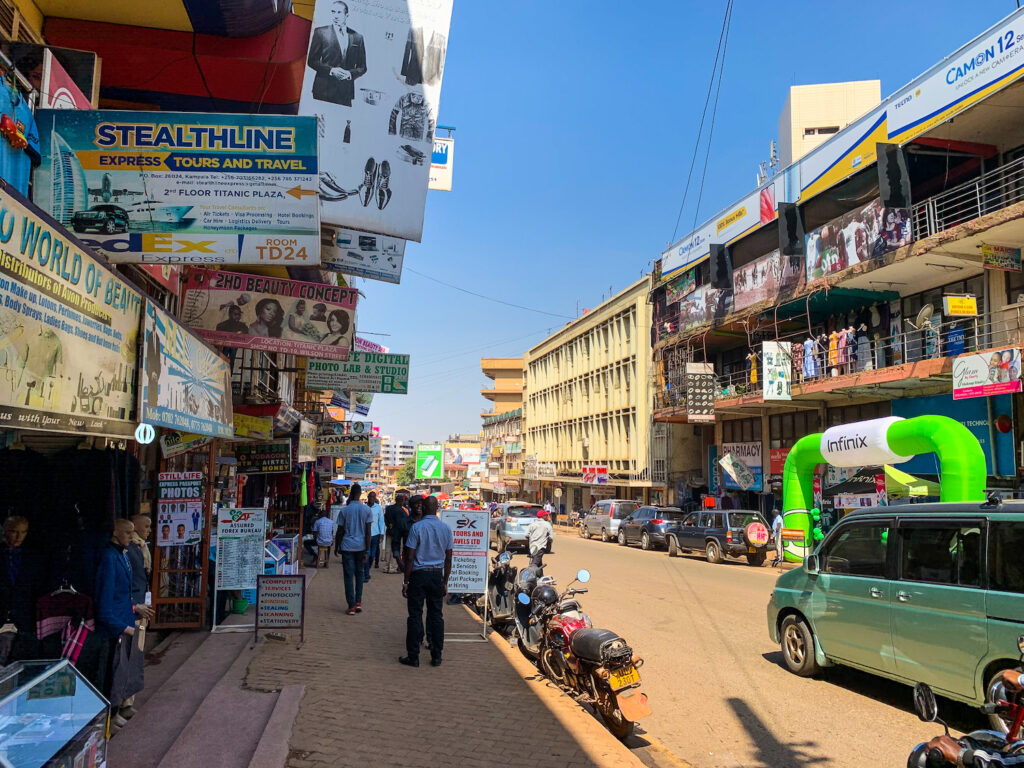
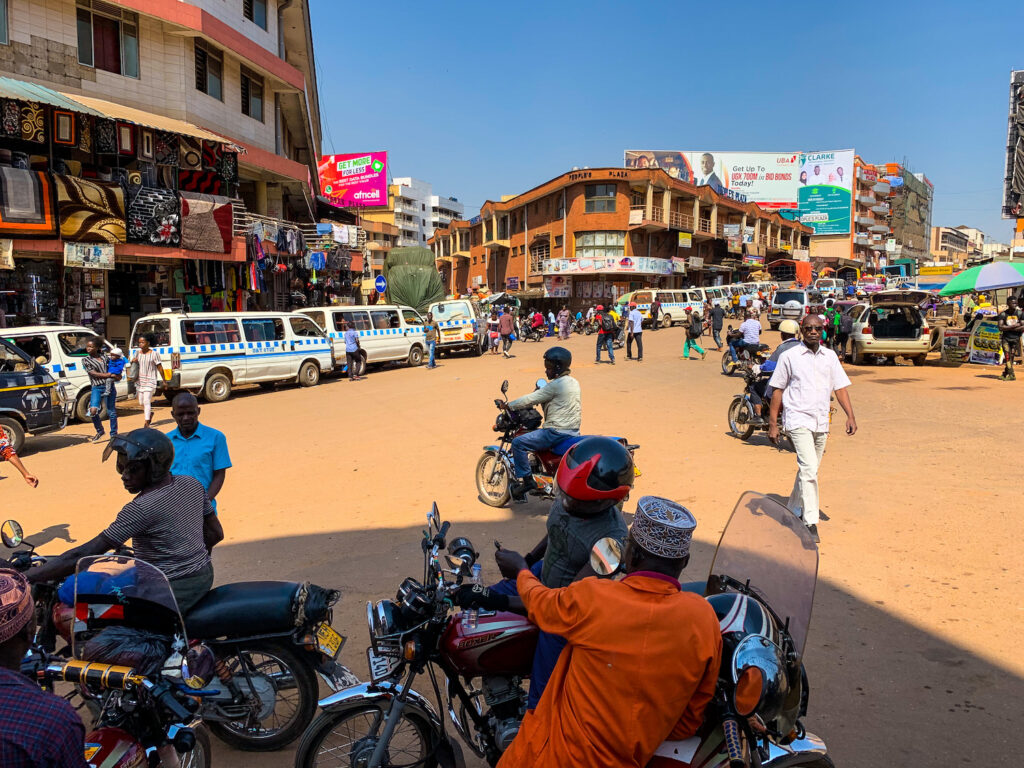
After taking an Uber to Entebbe, we checked into a guesthouse, Airport Link Guest House. It was really nice given the cost per night ($25). The rooms could do with a bit of soundproofing, but otherwise the hospitality and food are good. We decided to try to see Lake Victoria, so we walked down towards it but ended up in a slum district which was weird and didn’t feel great, passed another refugee settlement and finally found our way back to the guesthouse. We kinda stuck out. It’s also a shame you can’t swim in Lake Victoria on account of the bilharzia, not to mention the hippos and crocodiles.
Though it was New Year’s Eve, we didn’t bother staying up for midnight because our flight left the next day at 5am. The next morning, we hired a car to take us to the airport and took our takeaway breakfasts with us. The Entebbe airport is a maze – it’s so outdated and it took us forever running through the halls to find the check-in area. Finally we found it and it went smoothly from there on a short flight back to Kigali before transferring planes, and then a refuel stop in Harare.
A One-Week Suggested Itinerary
The following itinerary is different to what we did when we visited over Christmas 2019 – it’s what we wish we had did knowing everything we know know. We expected a lot more to be closed due to the holidays, but honestly, you’d never have guessed it was a holiday. All the transport was still running and shops and restaurants were open.
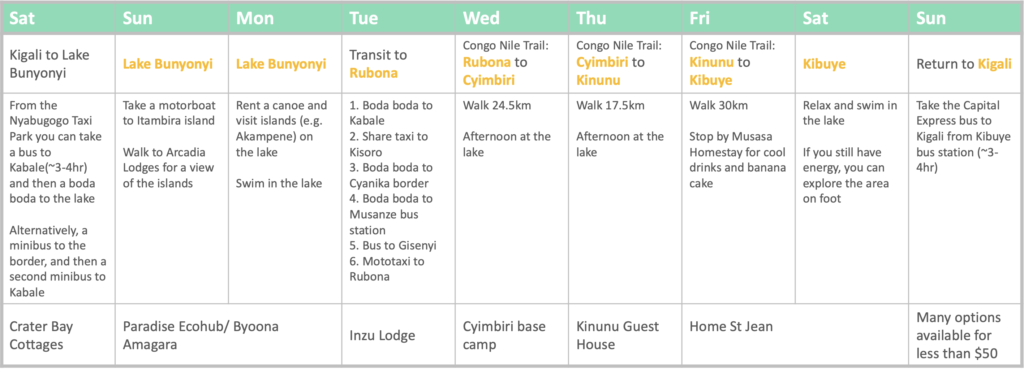
What to Pack
We went during rainy season in late December, when days can be hot and humid and nights can get quite chilly. Kampala was much hotter than areas around Lake Bunyonyi, but as soon as you start walking you’ll work up a sweat wherever you are. Because we planned to hike the Congo Nile Trail and needed to carry all of our things, our items were limited to the bare essentials. You can see everything we packed in that post, but to briefly summarise: bring all medications, malaria tablets, water purifying tablets and good walking shoes.
Visas
You have two visa options: individual visas for each country or the East Africa Tourist Visa. To enter Uganda, you must bring the yellow book with proof of your yellow fever vaccination.
If you only want to go to Uganda, Rwanda, or Kenya, rather than two or all of them, then the individual single entry visa is for you. Fees are as follows: Kenya ($51), Rwanda ($50), and Uganda ($50).
The East Africa Tourist Visa costs $100 for entry to Kenya, Uganda, and Rwanda and is valid for 90 days from the date of issue. You can move between the countries multiple times, but once you leave the region to a non-member country (e.g. Tanzania), your visa will lapse. You must apply through the country that you are going to first.
It’s worth buying this visa as it will save you the headache of paying in cash and paperwork for visas on arrival. If you are flying into Africa from a different continent, this wouldn’t be a bad option to get either because you can tack on a trip to Masai Mara to get your safari fix and fly out of Nairobi. Just a side note, the Rwandan website to apply for this visa is a pain in the bum and you might spend many hours refilling out the form on their glitchy system. Try using Firefox or some other outdated browser for optimal compatibility with their website.
